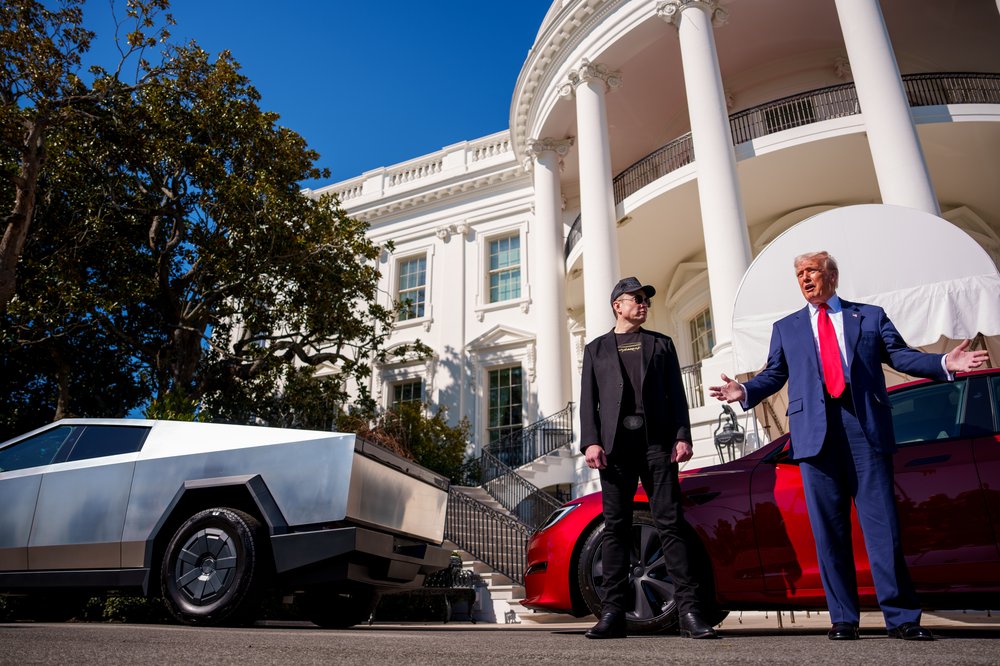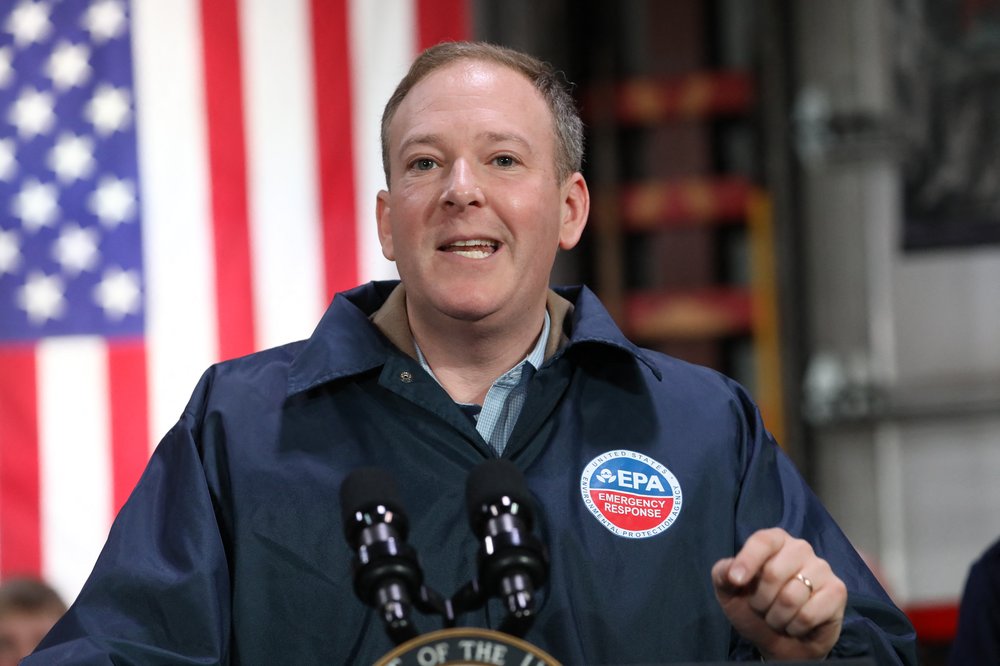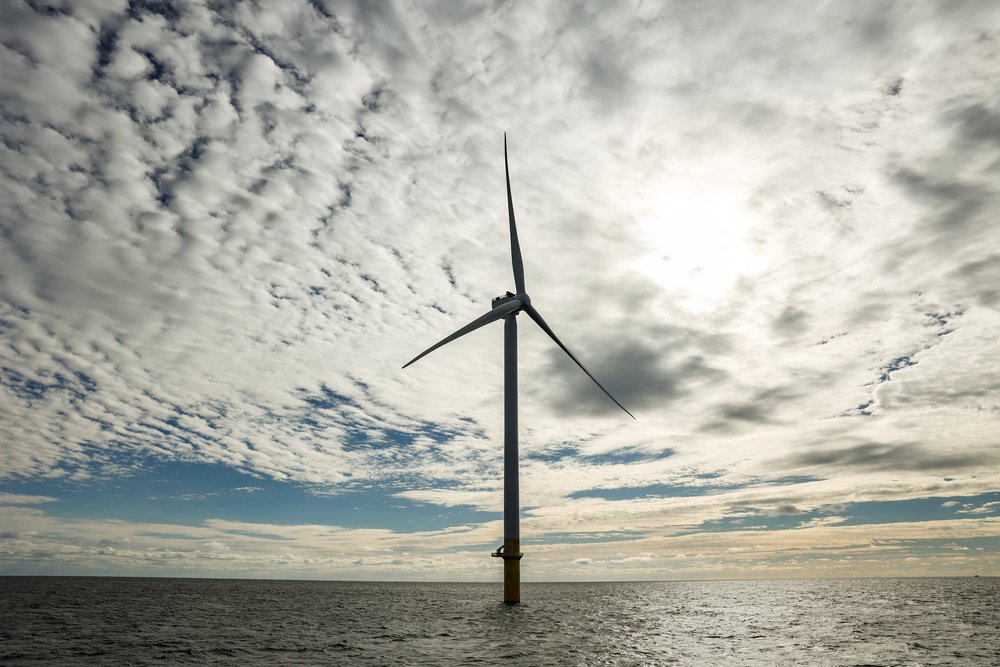Trump policies put NY climate goals further out of reach
April 25, 2025, 6:30 a.m.
Four months into Trump’s second term, backers of the state's climate law are hoping it will allow them to hold polluters accountable.

President Donald Trump’s first term helped inspire New York’s landmark climate law, which set renewable energy goals that would put the state on the path toward a zero-emissions economy.
Four months into Trump’s second term, backers of the state law are now hoping it will allow them to hold polluters accountable as the president pursues a deregulation agenda that puts climate goals further out of reach.
Trump’s actions after only 94 days back in office affect key power sources New York was counting on to cut greenhouse gas emissions 85% by 2050. A federal pause on wind permits stalled all wind projects in the state. Last week, the administration withdrew approval of a major wind project off the coast of Long Island that would have powered 1 million homes. The state had counted on solar energy being a significant contributor of clean energy, but Trump’s tariff war is driving up the cost of imported steel and solar panels. Even clean energy coming from Canada via a new underground cable could go up due to Trump’s trade wars, though it's still uncertain if a tariff will be imposed on electricity.
The state’s ambitious climate goals look almost certain to be delayed further. Before Trump took office, the state projected it was already three years behind. Now, the state appears likely to fall further back due to Trump’s policies. One reason is Trump’s pause on offshore wind power permits, which is likely to prevent New York from reaching the goal of building offshore wind turbines to power 6 million homes by 2035.
“The state has been relying really heavily on 9,000 megawatts of offshore wind coming into the state, and I don't think they're going to be anywhere close to that because the feds are going to shut off leasing for any new projects,” said Daniel Zarrilli, former chief climate policy adviser for New York City.
Nevertheless, climate experts told Gothamist that Trump’s policies – being spearheaded by EPA Administrator Lee Zeldin, a native Long Islander who represented New York in Congress – do not spell the death of New York’s net-zero aspirations. They said it’s critical the state launch its climate enforcement tool, cap and invest, that will force the largest polluters to pay fines that will be used to fund environmentally friendly projects. The state’s environmental agency took the first step last month and released draft regulations.
“Under the Biden administration, there was a relaxation of urgency by our state leaders, and they were sort of waiting for Washington to take care of things and help us meet our climate goals,” said Robert Howarth, a member of the state’s Climate Action Council. “We need to go back to realizing we can do it for ourselves here in the state.”
An EPA spokesperson signaled Zeldin was not itching for a fight with his home state.
“A pillar of Administrator Zeldin’s Powering the Great American Comeback initiative is cooperative federalism and working with — not against — states partners,” EPA spokesperson Jeff Landis wrote in an email. “New York state has numerous levers to influence emissions in various sectors and is responsible for progress towards their goals.”
But achieving those goals looks a lot more difficult under Trump.
Wind permits paused
Last year, Gov. Kathy Hochul hailed the Empire Wind 1 project 12 miles south of Long Island in the Atlantic Ocean as “a critical piece of our clean energy blueprint.”
Work on the project began last year. A port at the South Brooklyn Marine Terminal for the project had created 1,500 jobs, according to the project’s developer, Equinor.

But last week, Interior Secretary Doug Burgum imposed a stop work order on the project “until further review of information that suggests the Biden administration rushed through its approval without sufficient analysis.” The permitting process for Empire Wind 1 took more than four years, according to the federal permitting dashboard.
“We have one of the cleanest grids in the nation — with 50% zero-emission electricity — and are a gold standard in reliability. The governor recognizes that we can only continue to serve as that good example if the lights stay on and costs are low — and she will use every tool at her disposal to ensure that happens. And that includes the fully federal permitted Empire 1 Wind project that the Trump administration is actively disrupting,” Hochul spokesperson Emma Wallner said in a statement.
Only one small offshore wind project, South Fork Wind Farm on Long Island, is complete and represents roughly 1% of the state offshore wind goals.
Trump issued a pause on all permits for new offshore wind projects on his first day in office, which remains in effect. Critics say the offshore wind farms are an eyesore and harm marine life, which much of the scientific community rejects.
“He's completely squelching offshore wind,” said Michael Gerard, who tracks Trump’s effect on climate policy on the Climate Backtracker. “New York was counting on new offshore wind farms, but all the offshore wind farms are in federal waters, and so they have the authority to block that.”
The pause is delaying a major project planning to transform the Ravenswood fossil fuel plant in Astoria, Queens into a renewable energy hub plugged into offshore wind power.
The uncertainty surrounding federal approval makes developers hesitant to bid on offshore wind projects.
“[Trump’s] order really has a chilling effect on many construction projects,” Gerrard said. “If you're planning to build a new factory or other major project, what risks are you taking that the federal government will suddenly tell you to stop, after you've already invested millions of dollars?”
Onshore wind, while mostly on private or state lands, is also in jeopardy. Wind farms on land require federal permits. As of October 2024, the state has built 35 utility scale wind farms, which is just over 70% of the state’s onshore goals by 2035.
Federal withdrawal of climate funding
When President Joe Biden signed the $1.2 trillion infrastructure act, he described the law as a historic investment in the nation’s “clean energy future.” Now, much of that money is in limbo due to executive orders by Trump.
”There is uncertainty around the Inflation Reduction Act and the tax credits for clean energy and for a whole bunch of clean energy infrastructure,” Zarrilli said. “That was a lot of money, and I think a lot of projects may be in a wait and see mode before they make additional investments, whether it's battery manufacturing or electric vehicle manufacturing or offshore wind.”
New York City was expected to receive more than $2 billion from the Inflation Reduction Act for projects such as funding for residential solar panels and flood mitigation.
The state was also counting on funding for incentives for consumers and businesses to make switches to electric heat pumps, energy efficient appliances and electrification, but those funds are in limbo.
“ The investment decisions that people make, either as a homeowner able to take a few thousand dollars off a project, or you're a manufacturing company looking to make choices on where to invest and how to invest, those extra dollars make a big difference,” Zarrilli said.
While federal funding is critical for New York to get off fossil fuels, the state has tools to try to take on the cost burden of the energy transition.
“ We're a relatively prosperous state,” Howarth said. “We have the financial resources to push ahead with climate change if we have the political will to do so.”
The Climate Change Superfund Act, which became law last year, shifts the cost of climate change from taxpayers to the largest polluters, like oil companies. The state of West Virginia is leading a lawsuit challenging the law, arguing it wrongly punishes energy producers. If the law survives litigation, it could bring in $3 billion a year to fund resiliency projects – though that money wouldn’t start being collected until the end of Trump’s second term, if all goes as scheduled.

Advocates also said the state needed to implement cap and invest, which is the key enforcement tool written into the state’s climate law. Businesses that pollute over the cap, must pay a penalty, which goes toward decarbonization efforts such as electrification. The state estimated that the program could potentially generate $3 billion-$5 billion in its first year, increasing to $12 billion annually by 2030.
But it’s unclear when the program will be implemented. The state’s environmental agency is drafting enforcement rules, which will likely then be challenged in court.
The trade war with China
Trump’s tariffs on China will make New York’s energy transition much more expensive.
More than 80% of solar panels were wholly or partially made in China, according to the International Energy Agency. Earlier this month, Trump proposed a 145% base tariff on Chinese imports, with an additional 25% on top for steel, that disrupted the global economy. Marguerite Wells, executive director of the Alliance for Clean Energy New York that promotes renewable electricity, predicted solar panels will be more expensive and difficult to purchase.
“ Solar and wind are extremely price sensitive industries, and the projects just won't go forward if the price is above whatever the threshold is,” Wells said.
Wind turbines run into the same issues. Many of the largest turbine manufacturers are located in Denmark, Spain and China. Steel comprises at least 70% of a turbine's mass. Wells said U.S. steel manufacturers cannot meet current demands for steel to produce turbines domestically.
Trump’s “reciprocal” tariffs on other countries around the world are currently paused, but would likely raise clean energy costs further.
“Tariffs are just making everything more expensive and therefore you get less even if you're able to still do it, which is a big question with offshore wind,” Zarrilli said.
7 big ideas to get New York’s climate goals back on track